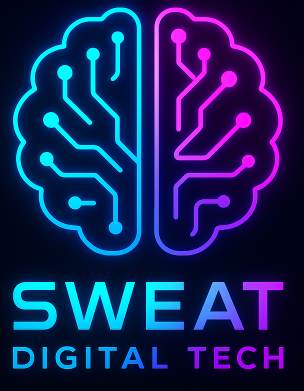1. Introduction to React
The Rise of React
React was introduced by Facebook to address the challenges of building complex, interactive user interfaces. Its approach to component-based architecture and the use of a virtual DOM revolutionised front-end development, making it easier to build and manage dynamic web applications.
Key features of React include:
- Component-Based Architecture: React’s component-based structure allows developers to build encapsulated components that manage their own state and can be composed to create complex UIs.
- Virtual DOM: React’s virtual DOM ensures efficient updates and rendering, improving performance and user experience.
- JSX: React’s JavaScript XML (JSX) syntax allows developers to write HTML-like code within JavaScript, enhancing readability and maintainability.
2. React’s Popularity and Community Support
Widespread Adoption
React has been widely adopted by a diverse range of companies, from small startups to tech giants like Facebook, Instagram, Netflix, and Airbnb. This widespread adoption is a testament to React’s reliability and effectiveness in building modern web applications.
Statistics support React’s popularity:
- NPM Downloads: React consistently ranks among the top libraries on npm, with millions of downloads each week.
- GitHub Stars: React’s GitHub repository boasts over 180,000 stars, reflecting its popularity among developers.
- Job Market: Demand for React developers remains high, with numerous job listings seeking expertise in React and related technologies.
Strong Community and Ecosystem
React benefits from a robust community and a rich ecosystem of tools, libraries, and resources. The active community contributes to continuous improvement and innovation, ensuring that React remains relevant and up-to-date with the latest trends in web development.
Key components of the React ecosystem include:
- React Router: A powerful routing library for managing navigation and rendering components based on URL changes.
- Redux: A state management library that integrates seamlessly with React, providing a predictable and scalable way to manage application state.
- React Native: An extension of React that allows developers to build native mobile applications using React and JavaScript.
3. React’s Versatility
Building Single-Page Applications (SPAs)
React is widely used to build single-page applications (SPAs), where content is dynamically loaded without refreshing the page. SPAs provide a smoother and more responsive user experience, making React an ideal choice for such projects.
Example: Netflix
Netflix leverages React to build its highly interactive user interface, ensuring a seamless and engaging experience for its millions of users worldwide. React’s component-based architecture and efficient rendering capabilities have helped Netflix maintain performance and scalability.
Developing Mobile Applications with React Native
React Native extends the capabilities of React to mobile app development, allowing developers to build native mobile applications for iOS and Android using a single codebase. This approach significantly reduces development time and effort while ensuring a high-quality user experience.
Example: Instagram
Instagram uses React Native to develop its app, benefiting from code reuse across platforms and the ability to deliver new features faster. React Native’s flexibility and performance have enabled Instagram to enhance its mobile experience continuously.
Server-Side Rendering with Next.js
Next.js, a popular framework built on top of React, enables server-side rendering (SSR) and static site generation (SSG), improving SEO and initial load times. These features make React suitable for a wide range of applications, including content-heavy websites and e-commerce platforms.
Example: Starbucks
Starbucks utilises Next.js to power its website, benefiting from server-side rendering to deliver fast and search-engine-friendly pages. This approach has enhanced user experience and improved search engine rankings.
4. React in Modern Web Development
Artificial Intelligence and Machine Learning Integration
React’s flexibility extends to integrating artificial intelligence (AI) and machine learning (ML) functionalities. Developers can create intelligent, data-driven applications by leveraging React with AI/ML libraries and frameworks.
Example: AI-Powered Chatbots
Organisations are increasingly using React to build AI-powered chatbots that provide personalised and efficient customer support. By integrating AI models for natural language processing (NLP) with React, developers can create responsive and interactive chat interfaces.
Component-Driven Development
React’s component-based architecture promotes component-driven development, where UI elements are built as reusable and self-contained components. This approach enhances code maintainability, scalability, and collaboration among development teams.
Example: Design Systems
Many organisations, such as Airbnb and IBM, use React to develop design systems, a collection of reusable UI components and guidelines. These design systems ensure consistency across products and streamline the development process.
Progressive Web Apps (PWAs)
React is well-suited for building progressive web apps (PWAs), which combine the best features of web and mobile applications. PWAs offer offline capabilities, push notifications, and a native app-like experience, enhancing user engagement and satisfaction.
Example: Twitter Lite
Twitter Lite is a PWA built with React, providing a fast and reliable user experience even on slower networks. The app offers offline functionality and push notifications, ensuring that users stay connected regardless of network conditions.

5. Case Studies and Success Stories
Case Study: Airbnb
Airbnb has embraced React for its web and mobile applications, capitalising on its component-based architecture and efficiency. By building reusable components and leveraging React Native for mobile development, Airbnb has streamlined its development process and delivered consistent user experiences across platforms.
Case Study: Facebook
As the creator of React, Facebook extensively uses the library for its web and mobile applications. React’s flexibility and performance have enabled Facebook to build highly interactive and scalable user interfaces, supporting its vast user base.
Case Study: WhatsApp
WhatsApp leverages React to power its web and desktop applications, ensuring a seamless and responsive messaging experience. React’s efficient rendering and state management capabilities have helped WhatsApp maintain performance and reliability across platforms.
6. The Future of React
Continued Innovation
React continues to evolve, with the community and core team actively contributing to its development. Upcoming features and improvements include:
- Concurrent Mode: Concurrent Mode will enable React applications to be more responsive by allowing multiple state updates and rendering processes to occur concurrently.
- Server Components: Server Components will allow parts of a React application to be rendered on the server, improving performance and reducing client-side JavaScript payload.
- Improved Developer Experience: Ongoing improvements in development tools and libraries will continue to enhance the developer experience, making it easier to build, test, and deploy React applications.
Adoption of New Technologies
React is well-positioned to adopt and integrate emerging technologies, ensuring it remains a relevant and powerful tool for modern web development.
Examples include:
- Artificial Intelligence and Machine Learning: React’s flexibility will continue to facilitate the integration of AI and ML functionalities, enabling developers to build intelligent and data-driven applications.
- WebAssembly: WebAssembly (Wasm) will enable React applications to achieve near-native performance by allowing execution of code written in other languages like C/C++ and Rust within the browser.
- Edge Computing: React’s ability to work with serverless architectures and edge computing will enhance the performance and scalability of web applications, reducing latency and improving user experience.
Conclusion: Key Takeaways
Despite occasional rumours about its decline, React remains a highly popular and versatile library that continues to shape modern web development. Key takeaways from this exploration include:
- Enduring Popularity: React’s widespread adoption and strong community support attest to its reliability and effectiveness in building modern web applications.
- Versatility: React’s versatility makes it suitable for various applications, from SPAs and PWAs to AI-powered applications and design systems.
- Innovation and Evolution: React’s continuous innovation and integration with emerging technologies ensure that it remains relevant and powerful for modern development needs.
As developers and organisations navigate the evolving landscape of web development, React stands out as a robust and adaptable tool that empowers them to build high-quality, performant, and innovative applications. Far from being dead, React’s future looks bright, with ongoing advancements and a thriving ecosystem ready to tackle the challenges of tomorrow.




